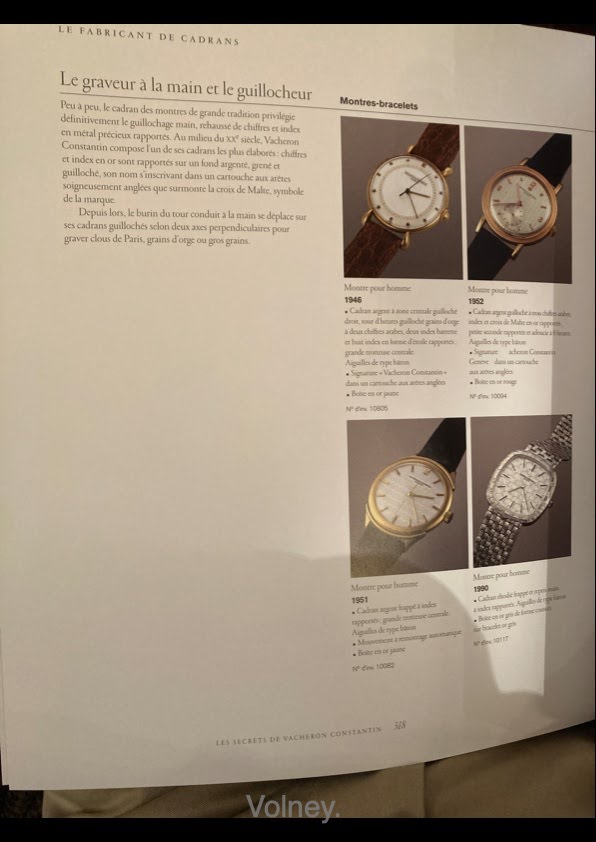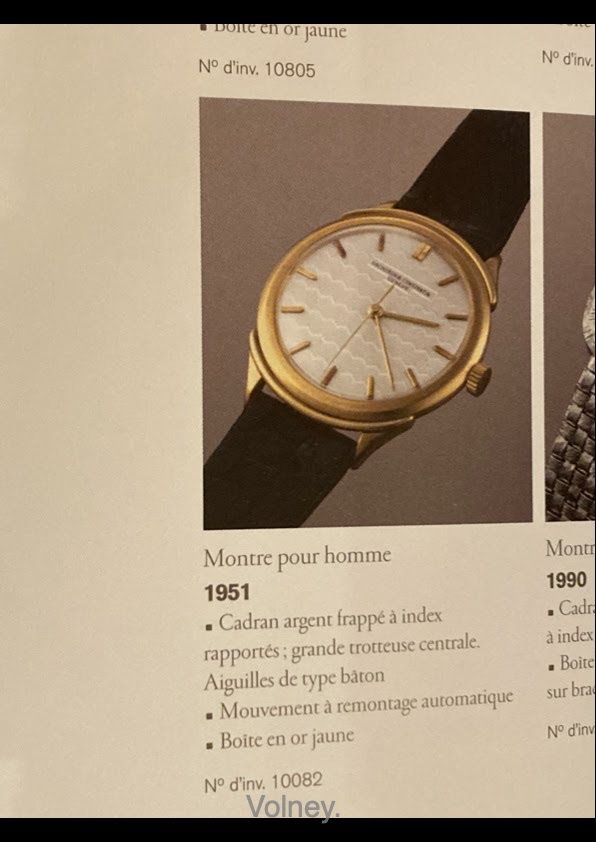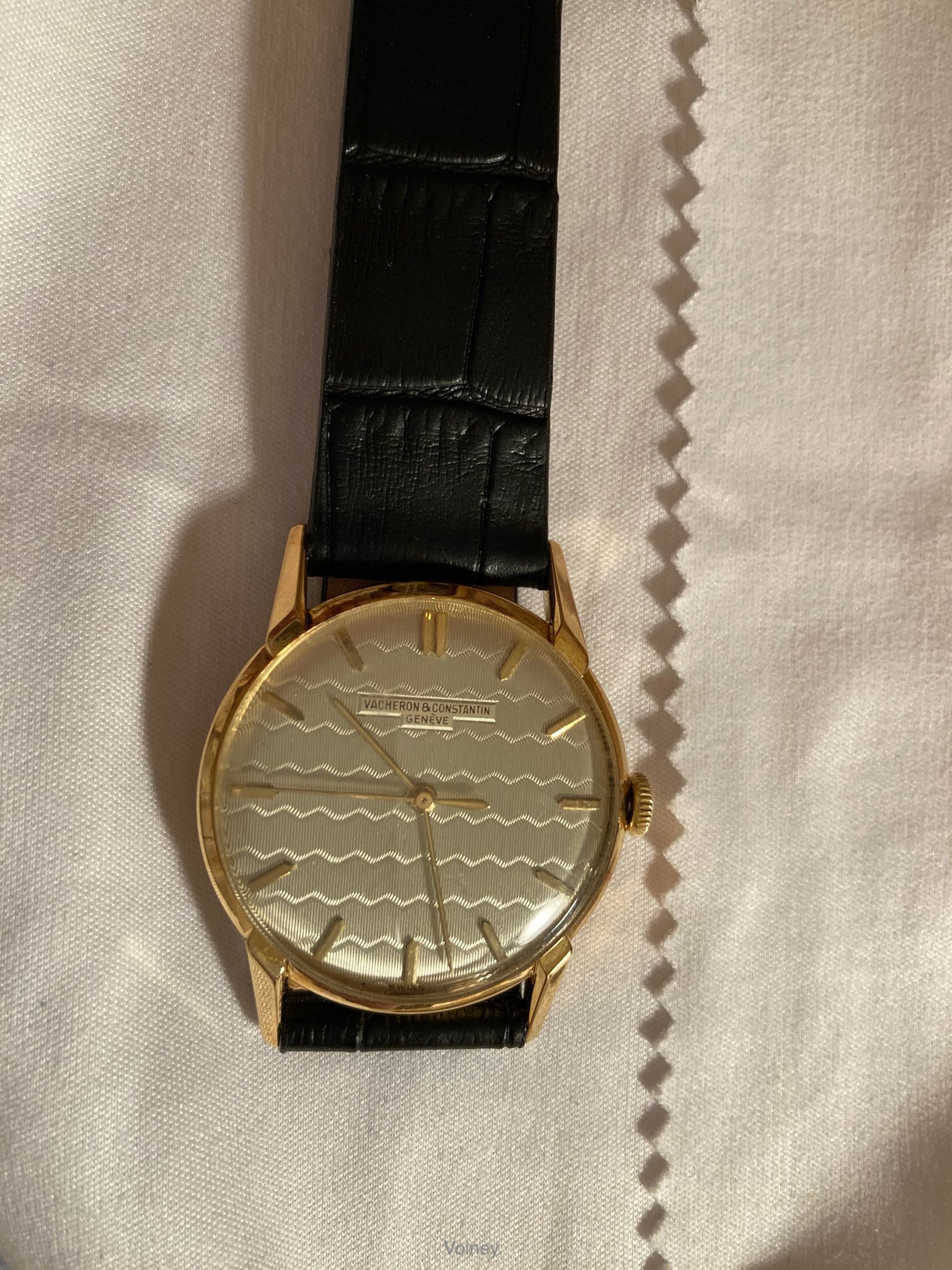
Volney.
252

Stamped and guilloché dials on mid-century Vacheron & Constantin watches.
My previous post has been deleted; on our moderator Tick Talk's invitation, I give it a renewed try.
Reading through the French edition of Franco Cologni's "Les secrets de Vacheron Constantin" (Flammarion, Paris, 2005), I noticed something rather strange at page 318 (in "L'horloger", the book's last section, Chapter 3 "Le fabricant de cadrans" - "Le graveur à la main et le guillocheur"): a watch from year 1951 is described as having been fitted with a "Cadran argent frappé à index rapportés", which could be translated as "Stamped silver dial with applied indexes" (see pictures 1-2).

Picture 1: Page 318 from Franco Cologni's "Les secrets de Vacheron Constantin" (Flammarion, Paris, 2005).

Picture 2: Detail from above featuring the discussed 1951 watch and its "stamped silver dial" as it is being described ("Cadran argent frappé").
I find this description as a "stamped silver dial" rather intriguing, as variations on this specific wave pattern can be found on several Vacheron & Constantin watches from the 1940s-1950s (see pictures 3-4-5), notably on the Ref. 4872 presumably presented by Zsa Zsa Gabor to Marlon Brando in 1954 (see picture 3) and is regularly referred to as a product of the guillochage technique. I personally have had the opportunity to handle the specimen seen on picture 5 and to observe the light reflecting itself on its dial: the depth and precision of the pattern, as well as the finish of incised surfaces rather evoked guilloché to me.

Picture 3: Vacheron & Constantin Ref. 4872 (Cal. 1001), presumably presented to Marlon Brando by Zsa Zsa Gabor on June 24, 1954, auctioned at Antiquorum's in New York on September 17, 2009 (Credits: Antiquorum).

Picture 4: Detail of a variation on the same pattern on a larger dial fitted on a 37 mm. Vacheron & Constantin watch reviewed on WatchProSite by Aaronm on May 27, 2011 (" www.watchprosite.com
"; Credits: Aaronm).

Picture 5: Vacheron & Constantin Ref. 4892 (Cal. 1002, with U.S. import mark ; private European collection).
I were curious to read about your opinions on this particular matter. Does it seem plausible to you that such a result might have been achieved in the 1940s-1950s through stamping techniques? Do you think dial-makers could have used both stamping and guillochage techniques alongside in order to obtain a similar pattern? Is the mention of stamping a translation error specific to the French edition of Franco Cologni's book?
Though this cannot - technically - be considered my first thread, I take this opportunity to thank the two members who wished me welcome here and who had received no answer yet because of the initial conversation's disappearance.
Volney.


